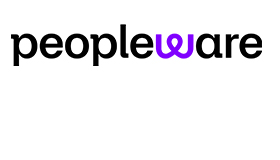Charles Watson of injixo takes us through the importance of shrinkage within your resource management calculations.
Shrinkage is one of the most important components for developing a staff plan in a contact center. Next to volume and handle time, it has the largest impact on your overall staffing requirements.
However, you need to spend some time on this critical metric if you want to get it right. Here’s how.
Most people just add shrinkage into the requirement calculation in their long-term capacity plan, and the same number into their workforce management system. But there’s much more to it.
In my time working with companies, I’ve found shrinkage to be one of the most misunderstood metrics that doesn’t get enough focus. Part of the problem is that people assume they understand it, so they don’t take the time to really learn it.
What Is Shrinkage in the Contact Center?
Shrinkage is normally defined as the percent of agents’ paid time that is spent unproductive. That means shrinkage includes everything except waiting for a call, talking to a customer and doing after-call work.
Some planners also include unpaid time in shrinkage, which can make sense depending on your objective, but it is rather uncommon.
TIP! A great measure for actual productivity is “utilization“. Utilization is a metric that represents the amount of paid time agents actually engage with customers. It’s taken by multiplying occupancy by the inverse of shrinkage.
Example: 80% occupancy and 30% shrinkage is 0.8 x 0.7, which equals .56 or 56% utilization. This means 56% of the time you’re paying front line employees, they are engaged with a customer. Increase either of the components of this formula and you’re getting more value for your labour spend.
Which Shrinkage Number Do You Use for Your Staffing Calculations?
You can either use the actual shrinkage numbers that you measure with your system or a shrinkage target. Which one you use depends on how you run your business. In any case, you need to make sure you call out any risks or opportunities.
For example, if the business shrinkage target in your contact center is 31%, but the real shrinkage trend is 35%, then you should plan to the 35% and call this out as a financial risk since it’ll cost you more now to achieve service level.
In a business where either they expect operations to get down to 31%, or don’t want to fund the 35%, you can staff it at 31%, and then call out the risk. In this case, you’d have a service level risk since you’re staffing below the actual shrinkage trend.
You should calculate the impact on service level by running the staff plan at both numbers. It’s a stronger callout if you can say: “There is a 6 point risk in SL if the planned shrinkage is not achieved”.
I know a lot of people don’t like to make that type of a specific callout because there are a lot of other variables that can influence the future. But it’s a good practice because it gives a sense of magnitude to the risk.
It’s less abstract than just saying: “We’re going to miss service level if we don’t hit the shrinkage number”. It’s a much different risk if it’s six points vs. 26 points in service level risk.
You can always caveat your number, or give a range if needed. It’s the sense of magnitude that’s helpful in business.
Why You Should Split Your Shrinkage Into Buckets
Shrinkage can be subdivided into different categories or buckets. These shrinkage buckets help you keep an overview of the different factors that are contributing to shrinkage.
Also, it helps to see at a glance in which places shrinkage could be reduced and where this isn’t possible. It’s also easier to engage with operations if shrinkage is split up in its smaller parts.
Creating shrinkage buckets is a best practice to split up the total shrinkage into logical components that can be managed. There are several different ways to break shrinkage time up, but I will share with you a standard approach:
Bucket 1: Discretionary Time
Examples include coaching, training, meetings, and huddles. This is time that you are investing in your agents and this time can be actively managed.
If you have a 60-minute 1:1 each week, that is 1 hour out of 40 hours, or 2.5% shrinkage
Bucket 2: Out of Office Time
Examples include vacation, sick and leave of absence. You may want to even break out each of the three above. Vacation is allotted by the company policy, sick is managed, and leave of absence may be a benefit that is allotted.
Bucket 3: Administrative Time
Examples include projects, system issues and offline work. This bucket is for activities that may not add value from a productivity perspective. In general, you want this time to be as low as possible so the agents spend more time handling contacts.
You should consider the best way to bucket shrinkage based on how your contact center works, but the core principle is that you’re trying to find a logical grouping for your shrinkage. You likely have way too many individual shrinkage segments, which becomes messy and unmanageable.
At the other end of the spectrum, if you only report the total shrinkage number, you’re showing a number that isn’t actually manageable. You control shrinkage by managing the components of shrinkage.
How to Factor in Shrinkage
When building the long-term staff plan in your contact center, shrinkage is pretty straightforward to calculate. Once you have the total shrinkage number, you then gross up your base requirement.
So, if your calculation for staff requirement (using volume, handle time and service level target) is 100, you need to increase that requirement to account for the fact that your staff isn’t fully productive.
To gross it up, you need to divide that number by (1 – Shrinkage). The formula would look like this if your base requirement was 100 and your shrinkage was 30%:
100 / (1 – 0.3) = 143
The requirement for 100 FTE at a 30% shrinkage is 143. A common mistake in calculating shrinkage is to take the 100 and multiply by 130% to get the total required. It’s important to remember that 100 FTE is what you have to have left after the shrinkage is subtracted.
If you take 100 x 130%, you get 130 FTE. If you take 30% away from 130, you’re only left with 91 FTE to take calls. This error will leave you understaffed.
Shrinkage in Your Annual Plan
The first step in planning shrinkage is to get it into your annual plan. In this step, you’re adding in a shrinkage % to each month of the year. The starting point is to put the same percent into each month.
After that’s done as a baseline, look at how you want to apply seasonality to shrinkage. There are a few drivers to this. The first is based on your volume demand.
A great way to flatten out the overall staffing requirement is to put more discretionary or vacation shrinkage in months with lower requirements and put less in months with higher requirements.
Using shrinkage as a lever here reduces the total number of employees required because it leaves you with more staff at peak times.
Another driver to vary the shrinkage numbers throughout the year are employee benefits. If employees want to take more time off in the summer, or holidays, the annual plan is where that should be added, so it can be staffed accordingly.
Partner closely with the operations team on this, and be sure to align on the objective (e.g. how you balance employee benefit with efficiency).
Shrinkage in Your Weekly Plan
As you get to weekly planning, you’ll likely have most of your shrinkage in the workforce management system already.
As meetings get scheduled, people take time off, and other activities are planned, those shrinkage elements are added on top in the system to show that agents will be unavailable for production.
The largest amount of last-minute shrinkage in a contact center will generally be absenteeism, since you generally don’t know that ahead of time. Your workforce management system should have a place for you to add this. This will further reduce your expected agent availability by that amount.
The key here is to make sure you don’t double count. Decide which elements are always pre-planned and which will be added in real time.
Conclusion
Take an intentional approach to shrinkage in your contact center. This is a great topic to drive substantive conversations with your partners in operations.
The workforce management team can’t manage this metric, but you can make sure that it’s properly represented in the planning process, and that the appropriate risks and opportunities are highlighted as you engage in the planning process.
Report out on shrinkage at least weekly, so there is clarity how the actual is performing vs. the target. Best practice is to have a strategic conversation with the operations leaders each quarter to discuss any changes that may need to be made to shrinkage in the long-term plan.
This blog post has been re-published by kind permission of Peopleware – View the Original Article
For more information about Peopleware - visit the Peopleware Website
Call Centre Helper is not responsible for the content of these guest blog posts. The opinions expressed in this article are those of the author, and do not necessarily reflect those of Call Centre Helper.
Author: Peopleware
Published On: 14th Jun 2019 - Last modified: 18th Jun 2019
Read more about - Guest Blogs, Peopleware






 Peopleware is a leading workforce management (WFM) solution, trusted by over 500,000 users in 30+ countries. With smart forecasting, automated scheduling and real-time management, organizations can optimize workforce efficiency and keep work aligned with demand. From precise time tracking to flexible planning, Peopleware helps organizations boost operational efficiency and foster a more engaged, productive workforce.
Peopleware is a leading workforce management (WFM) solution, trusted by over 500,000 users in 30+ countries. With smart forecasting, automated scheduling and real-time management, organizations can optimize workforce efficiency and keep work aligned with demand. From precise time tracking to flexible planning, Peopleware helps organizations boost operational efficiency and foster a more engaged, productive workforce. 































